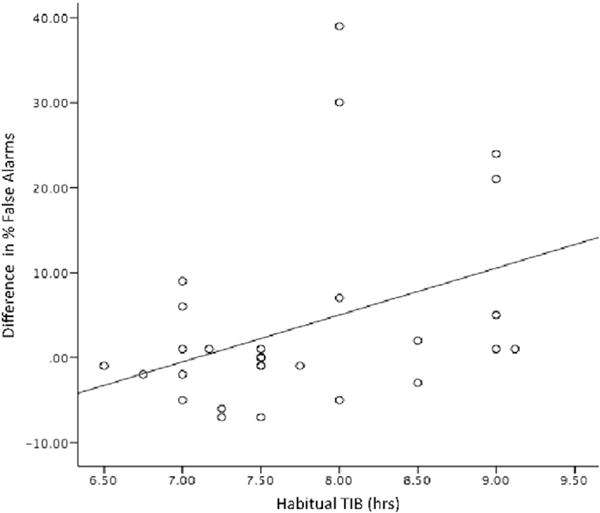Fig. 1.

Difference in Go/No-Go performance (percentage false alarms) during short–long sleep as a function of self-reported habitual time in bed (TIB). Longer self-reported habitual TIB was associated with greater inhibition errors in short vs. long sleep (r = 0.38, p = 0.04).
